Recently (Feb 2024) I have been reading a book called ‘Futureproof Your Garden’ by Angus and Emma Stewart, and I have found it to be an interesting and quite informative book. While poring through said book I came across the idea for a test to check if your compost had broken down sufficiently to be able to use.
The theory goes that compost which has not completed decomposition will consume nutrients in the decomposition process rather than releasing them for use by plants. As they put it “The consequences of the compost not fully being broken down is that it will take away precious nutrients from nearby plant roots rather than add nutrients to the soil”. Which sounded reasonable and in line with what I had learned.
So, by sowing seeds of a fast-growing veg into the compost to be tested, a poor germination rate means that there is a lack of nutrients and therefore the compost has not completely broken down and should be left to complete its ‘compostation’.
A photo is provided of two pots, the one on the left being labelled as ‘low-quality compost’ with one or two seedlings barely showing over the rim of the pot, and the one on the right filled with what was labelled as ‘good quality potting mix’ as a control showing lots of healthy, (if slightly leggy) seedlings.
Unfortunately that did not gel with my understanding of seed germination, where the seed itself contains sufficient nutrients to get at least to the seed leaf (two leaf) stage without external input. It seemed to me, however, that it was an interesting idea and certainly worth a go!
The Test
To conduct the test I used my own Bok choi seeds rather than the radish they used, although the radish seeds were just a suggestion and so long as the seeds were quick growing for a quick result it should be fine.
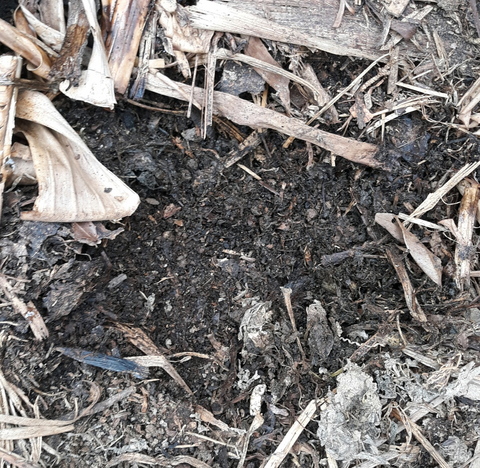
Dark Loamy Compost from the centre of the pile
To act as the test materials I filled three small plastic punnets with –
- Dark loamy compost from the centre of the pile,
- A mix of semi broken down and poorly broken-down leafy material from the outer edge of the compost pile, and
- Some of my own seed raising mix as a control.
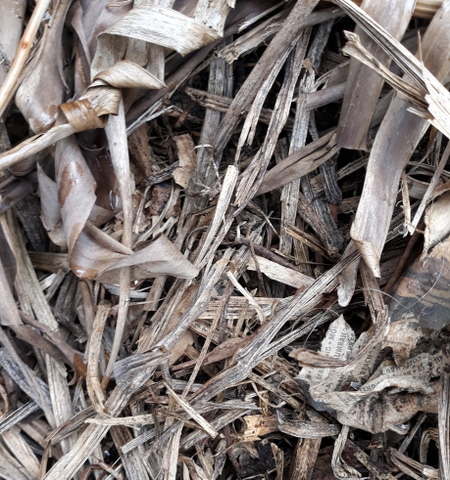
Semi-broken down material from the side of the heap
I feel that some commercial compost would have been better as a control but didn’t have any. Anyway, potting mix is the control they used in their photo.
Having filled the punnets I then sowed 20 bok choi seeds in each punnet, and placed them on a capillary bed (to ensure enough water) in the greenhouse.
The authors suggest to look for “high germination rates and healthy dark green seedlings” and if they are not forthcoming, “you may need to add some extra nutrients to the compost so it reaches full maturity.”
The Results
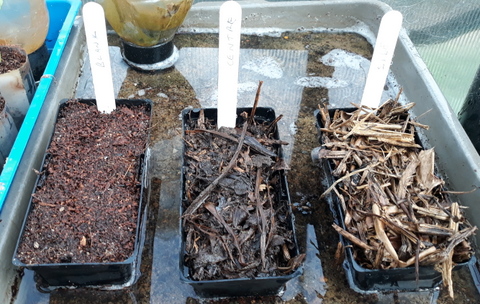
Day 1
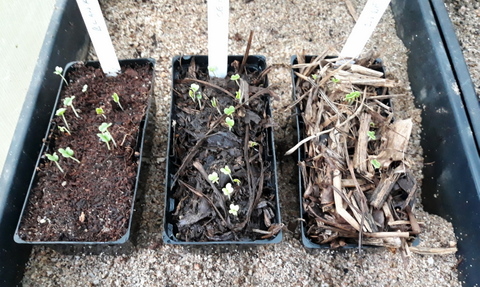
Day 3
Germination rates
- compost from the centre of the pile: 17/20
- semi-broken-down material from the side of the pile: 18/20
- Seed raising mixture (control): 17/20
So, essentially the same result for each.
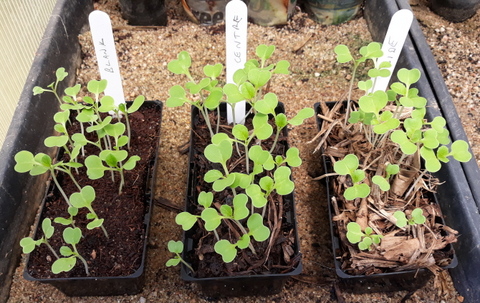
Day 10
After ten days there is no significant difference between the seedling in the three punnets, the bok choi seedlings growing in the material not completely composted seem as green and healthy as the other two punnets. In all punnets, some of the seedlings are sprouting their first set of true leaves.
Conclusion
This test is not effective in quickly demonstrating that a sample of compost has or has not completely broken down.
Comments
It is a shame, I wish this test would have worked, it would have been handy. As mentioned previously the book is quite good in other respects, but this particular technique is a bust.


